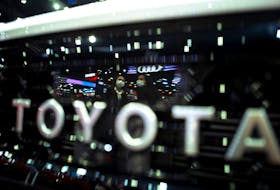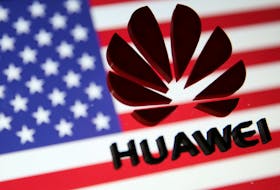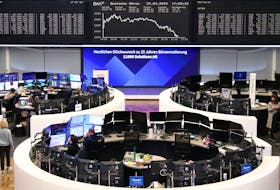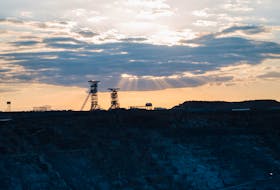You’d think the business of selling fuel is a profitable one for anyone who owns a gas station, but that’s not so, according to gas station owners, as well as numbers provided by the Public Utilities Board (PUB).
The $1.37 a litre is shared between oil companies, the government, gasoline wholesalers and gas station owners.
Robert Byrne, director of regulatory and advisory services with the PUB, said breaking down who gets how much money from that sale of a litre of gasoline is a fairly simple task once all the information is available.
The PUB sets some aspects of the cost of gasoline, and calculates the other numbers, based on benchmarks, and information it gathers from world markets.
The first number the PUB considers is the Average New York Harbour Benchmark Price for the period.
“That’s what’s called the NYMEX, or the Commodity Exchange Price. That’s what we start our pricing with,” said Byrne. “This is the average of seven days’ values as reported by the Platts reporting service.”
On Jan. 16, that number was at 76.81 cents — which the PUB has no control over, and which is based on factors such as the market price of oil, and others.
Next, a mark-up is put on that price in the amount of 14.83 cents.
Byrne explained how the PUB arrives at the number.
“This is the amount of money that’s built into the price that either goes to the service station owner that’s dispensing the fuel, or to the wholesaler that brings it in, stores it, and transfers it to the retailer,” he said. “Out of that 14.83 cents a litre, 8.58 goes to the supply chain before the operation — so that would be the exploration cost, the refining cost, the transportation cost, storage cost and delivery cost.”
In the end, out of that $1.37 per litre of fuel, the gas station owner gets 6.5 cents of every litre of fuel they sell, explained Bryne.
The other aspect the PUB has control over is the zone differential, the formula that considers the cost of getting gasoline to different areas of the province.
“The cost to dispense (gasoline) is pretty much the same — you’ve got to have a pump, you’ve got to have a staff person, you have to have a shop and so on and so forth. But the actual cost to get the fuel to the different areas of the island is what the zone differential is designed to compensate for,” said Byrne.
With the cost of refining, delivery, zone differential and gas station owners’ share added up, the price of a litre of gas is at 95.54 cents. That’s what people would pay at the pump if the add-ons stopped there.
So what drives the price up the other nearly $0.42 cents a litre? Taxes.
On every litre of gasoline, the federal government receives 10 cents. The province collects 16.5 cents.
Then the HST is added on, to get the final price per litre at the pumps.
Small potatoes
Dwayne Rogers said when you break down who gets a share of the money for every litre of gasoline sold, it’s glaring just how little retailers are actually making.
Rogers owns the Esso station in Baie Verte, one of only two gas stations in the community. He said that even though his station sells quite a large volume of gas, considering its rural location, it’s a struggle for the business owner.
“A lot of us are struggling to get by, actually, because it’s been so long since we’ve seen an increase, and the cost of operations are constantly going up.”
Rogers said basic mathematics can determine what a station similar to his is making. His is a privately owned gas station, which means that even though he’s flying the Esso banner, he’s still an independent business owner who pays his own way in the day-to-day operations of his station.
“We sold about 1.5 million litres of gasoline last year,” he said. “On paper, it looks like we did really well, but when you start to look at it closer, you realize that what we make on gas isn’t much at all.”
According to the PUB, residents of Zone 5 paid an average of $1.37 per litre for gasoline in 2013, based on analysis of the whole year’s gas prices.
Using that figure as a basis for calculation, would mean a station selling the equivalent amount of gas to Rogers’ took in a little more than $2 million dollars. However, as he points out, that’s far from what he would bring home.
On 1.5 million litres of gasoline, based on the PUB’s benchmark of 6.25 cents for the retailer, Rogers said that adds up to only $93,750, a very small share of the $2 million in sales.
“It doesn’t take a genius to figure it out, does it?”
Because his margins are so low, Rogers said he’s finding it hard to keep his operation above the waves, especially as gas prices fluctuate weekly.
“Let’s say I buy gas at the higher price that’s set,” he explained. “So, on that gas, I have a six cent margin to work with. If the price drops, and I’ve still got that expensive gas in my tanks, then my margin drops with it and, suddenly, I don’t make as much money.”
Rogers said he’s heard the argument go the other way as well, that if the price goes up, he makes money on his gas. However, he said, based on experience, that doesn’t play out in reality.
“If I have the gas in my tank that I bought at a certain price, and word comes out that gas is going down the next day, or whatever, then that’s the days I hardly see a vehicle pull into the pumps,” he said. “Obviously everyone is going to wait to come by and get the lower price, which means a loss for me.
“Now let’s say I have the gas in the tank and word comes that the price is going up. Then what happens? I can hardly keep up with it, everyone is coming to fill up before the price goes up, they drain the tanks, and I still end up having to buy the more expensive gas, and losing my chance at making a bit higher margin.”
Rogers said when people realize that, and see what a retailer is expected to do with that money, it’s staggering.
“Out of what we make, we have to pay for everything from maintenance and insurance on the pumps down to the paper in the cash register,” he explained. “It’s crazy, really, when you realize what goes into running everything — insurance and minimum wage is going up all the time, maintenance on the pumps isn’t cheap, things need to be replaced every so often and … it’s almost too much sometimes.”
• • •
Morris Budgell of King’s Point said the low margin is why he shut down his gas station at Baie Verte Junction.
“We just couldn’t do it;. There wasn’t enough money into it,” said Budgell.
He told TC Media they spent a considerable amount of money installing the pumps and making sure everything was up to standard in order to sell gas there in the first place.
“It’s not cheap, you know. We put in about $50,000 just to get up and running. Then when we started going, with the low margins you make on selling gasoline, it’s nearly impossible, to do anything with it.”
Budgell said one of the biggest deterrents he found with selling gasoline from his location was the disadvantage he had of the zone differential.
“People would come by and, rather than stopping to my place, they’d go on to Hampden Junction because they’d get it cheaper,” he said.
Budgell said something needs to be changed, otherwise more stations like his will have to shut down.
“Look at the number of gas stations you see shutting down,” he said. “They just can’t make it anymore; there’s not enough into it to keep going.”
Murphy’s law
At least one provincial politician is saying the issue runs even deeper than most realize.
George Murphy, NDP member for St. John’s East, is no stranger to gas prices in the province. As a member of the Consumer Group for Fair Gas Prices, Murphy has been talking gasoline prices for the past number of years. He said the taxes government imposes on gasoline has been a topic of their conversation for a long time.
“The consumer, when he’s taxed at the pumps, he’s also being taxed an extra 3.5 cents a litre, because of how the province and the federal government figure out their range of taxes after they put the retailer markup on,” said Murphy. “All because the provincial and federal governments can’t seem to get together at the table to renegotiate the HST agreement they originally signed.”
Murphy said the double taxes consumers pay isn’t fair.
“It’s part of our platform that we’d change that, so that you’re not dinged those extra 3.5 cents,” he said.
However, if that can’t be done, Murphy said, they have ways they can better spend the money collected.
One of the NDP’s suggestions is to put that tax money back into the rural economy, via tax breaks for small businesses.
“For any small business that has a payroll less than $500,000 (annually) they should not be paying any kind of small business tax in this province,” Murphy said. “So our proposal is to reduce it by one per cent a year, to the point where you’re not paying anything, because you’ve got small businesses in this province that are running about 40 per cent of the economy. So that’s somewhere else where we could be helping keep a small business viable.”
The Nor’Wester








